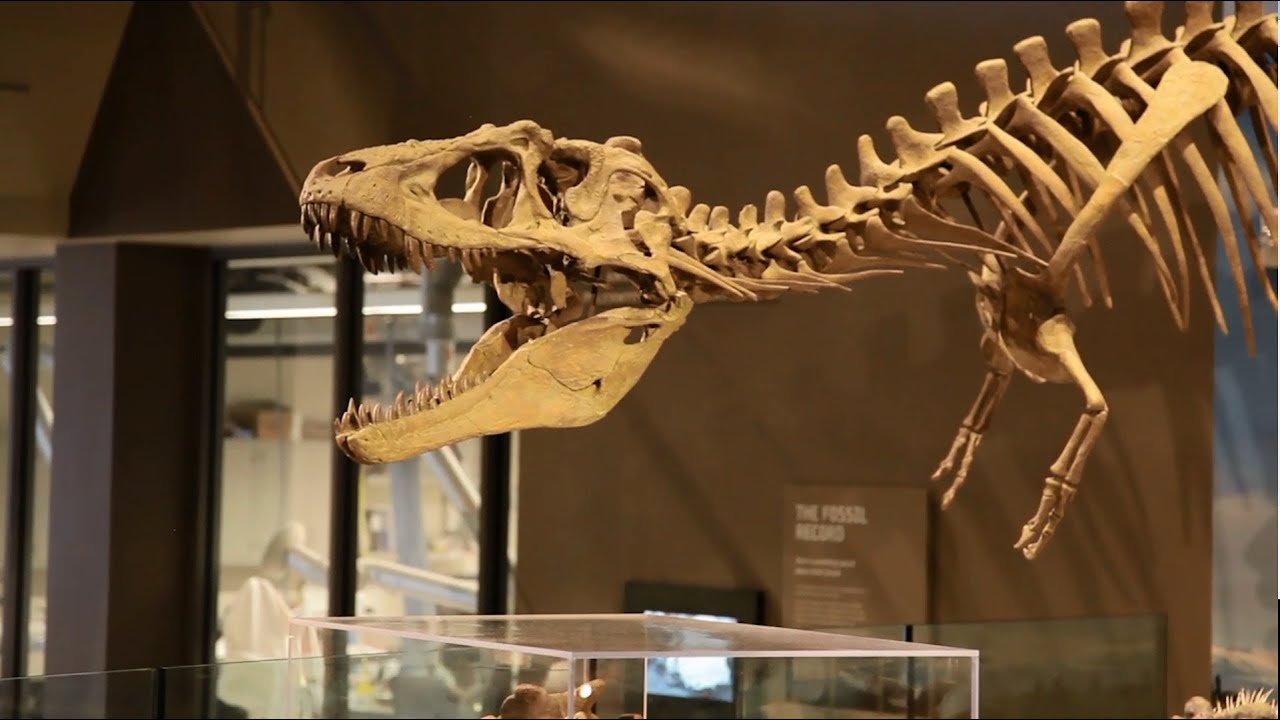
Fossils may be our best way at getting a significant glimpse into the past. Fossils offer a fascinating insight into where we’ve been and can sometimes even help us figure out where we’re going. This is the list of unbelievable fossils discovered.
Sea Monster Mid-Birth
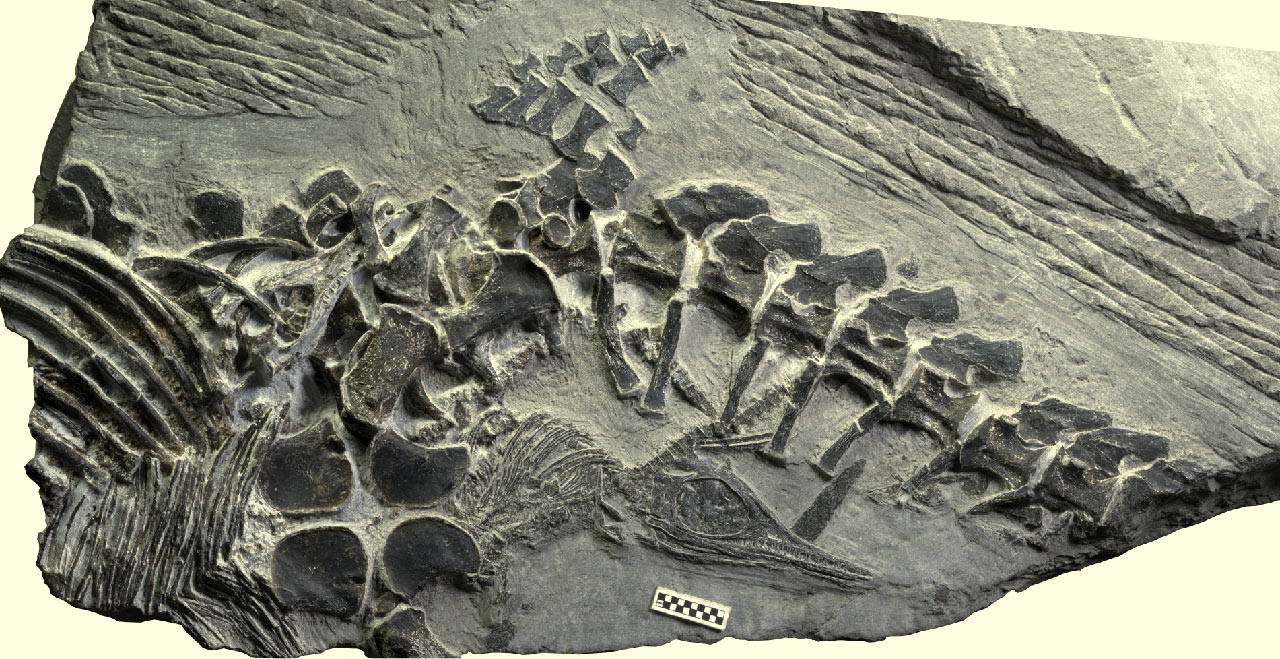
This is a fossilized sea-creature who’s in the middle of giving birth two or three children. As you can see from the bones she is already given birth to one of the children, the second is in the process of being born with, the third yet to come. Paleontologists have been able to deduce that the poor creature in question was an ichthyosaur. Ichthyosaur were large marine reptiles that lived in the Mesozoic era, 252 to 66 million years ago.
Science became aware of the existence of ichthyosaurs during the early 19th century when the first complete skeletons were found in England. Later that century, many excellently preserved ichthyosaur fossils were discovered in Germany including soft-tissue remains. Since the late 20th century, there’s been a revived interest in the group leading to an increased number of named ichthyosaurs from all continents with over 50 valid general being now known.
Up until the discovery of this fossil, people had thought that the ichthyosaur like most sea creatures and reptiles would lay eggs. Instead, this fossil suggests the live bearing of these young which would have taken place on land. This baffling revelation to science has completely shaken up what paleontologists and zoologists thought they knew about this particular animal.
Scarily Realistic Fossil
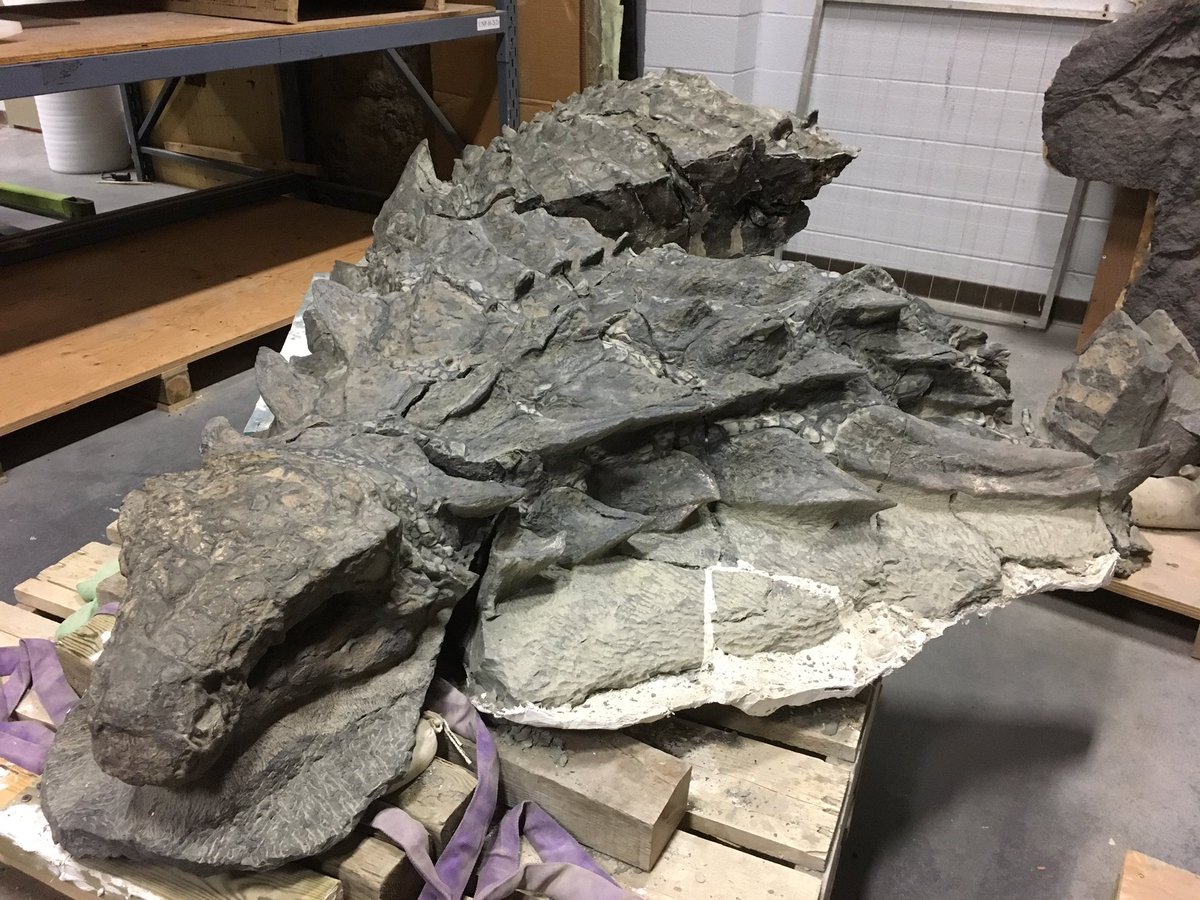
This particular fossil is remarkably well-preserved. You’ll almost think it was the actual living creature itself merely treating itself to a little nap but the intact nature of the fossil isn’t the only thing that makes this impressive, it’s the fossil of a never-before-seen creature, a new type of nodosaur.
This fossil found by accident by Canadian miners is a new type that we had no idea existed until they found it. Even more curiously, it was found in a marine environment this is not standard for dinosaur discoveries. Its entire body is petrified, not just the bones meaning it’s possible to see this dinosaur scales and skin in previously unprecedented levels of extraordinary detail. It is without a doubt one of the most impressive discoveries in the world of paleontology.
The Largest Ever T-Rex
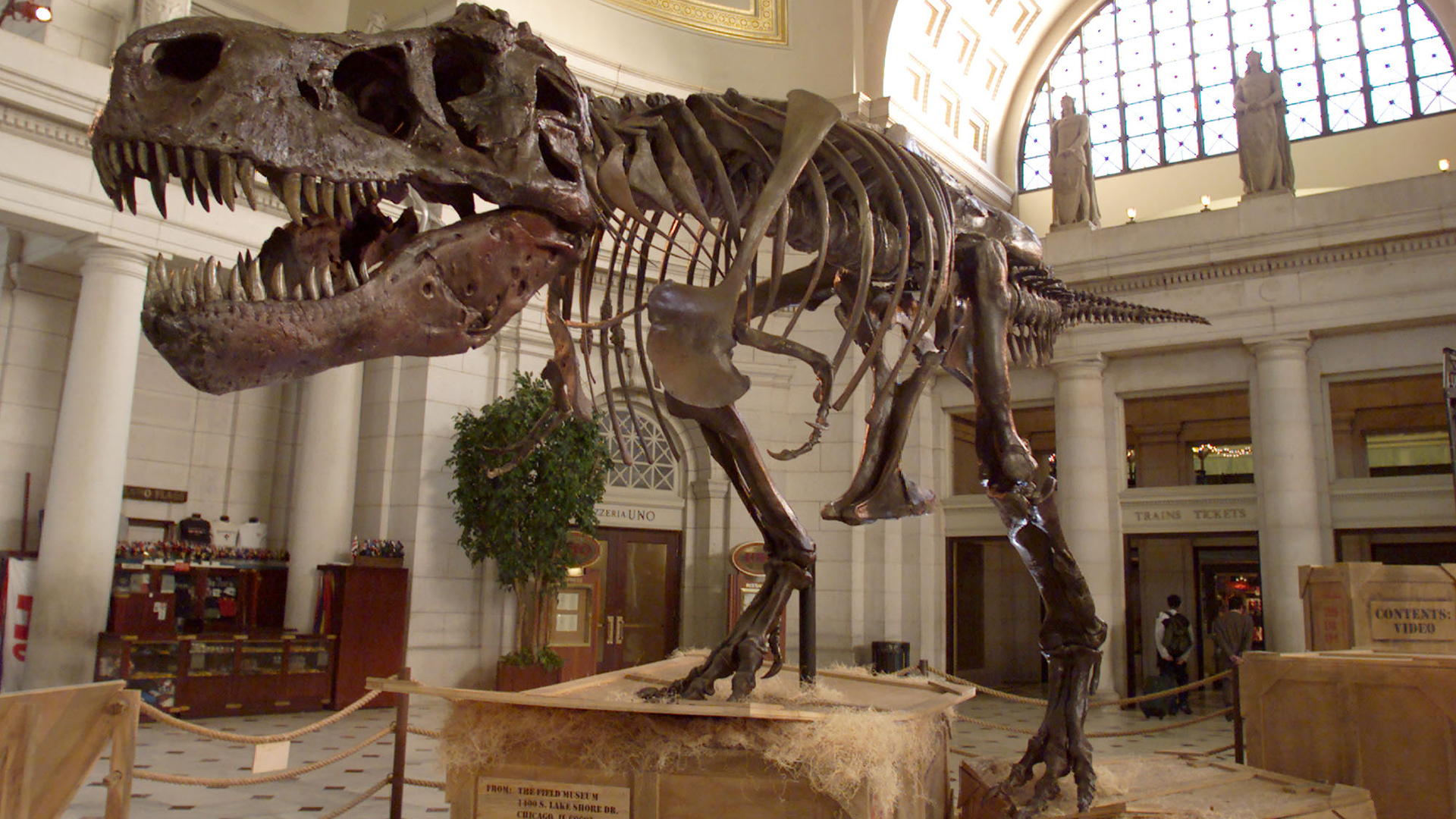
We know t-rexes are big and this one may just be the biggest. Her name is sue and she is the best preserved and most complete t-rex ever found, by extension this makes her the biggest. She is 40.5 feet long 13 feet high. dyno experts said about her weight that may have been between 9.5 and 18.5 metric tonnes. Sue was discovered in South Dakota in 1990 by Sue Hendrickson who decided to name the skeleton after herself. Paleontologists had only ever discovered t-rex skeletons that were 60% complete but Sue was incredibly 90% complete. This incredible discovery has massively helped us understand the mighty species of the t-rex and was key to us advancing our knowledge of dinosaurs overall.
After the bones were prepared, photographed, and studied, they were sent to New Jersey where work began on making the mount. This work consists of bending steel to support each bone safely and to display the entire skeleton articulated as if it was in life. The real skull was not incorporated into the mount as subsequent study would be difficult with the head 4 meters or 13 feet off the ground. Parts of the skull had been crushed and broken and thus appeared distorted. The museum made a cast of the skull and altered this cast to remove the distortions thus, approximating what the original undistorted skull may have looked like.
In 1992, Hendrickson joined a team of marine archaeologists headed by Frank Gaudio. With them, she took part in many diving expeditions. The most notable of which were the Royal quarters of Cleopatra and Napoleon Bonaparte’s Lost fleet from the Battle of the Nile. In 2005, Glamour magazine honored her in their glamour Woman of the Year awards. In 2010, she published an autobiography entitled hunt for the past my life as an explorer.
A Pre-Historic Poop
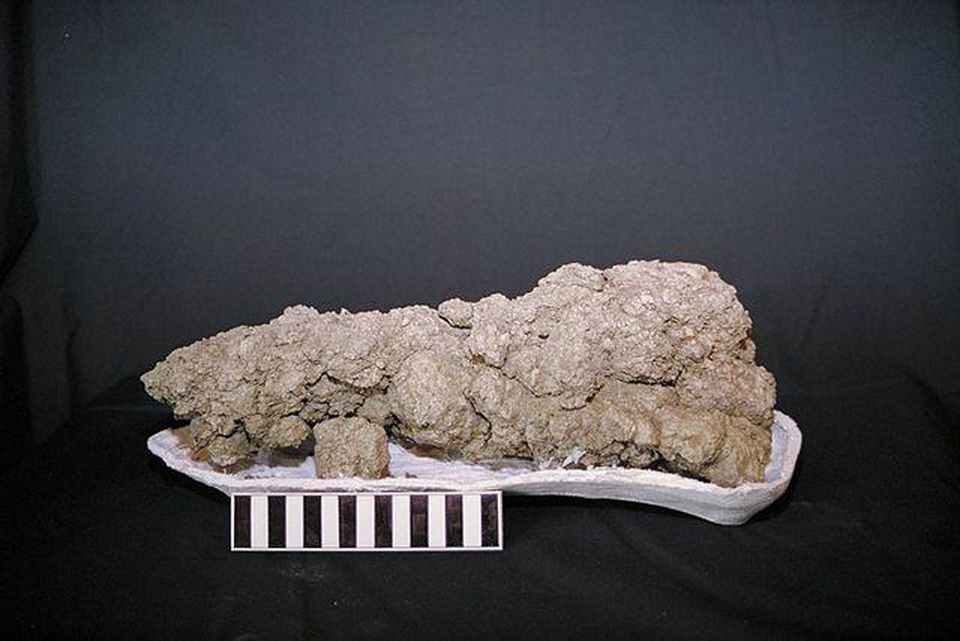
This fossil may look like an ordinary rock but this without a shadow of a doubt is the single most important fossil ever discovered because this poop. This shows the fossilized remnants of 65 million year old dinosaur dung. Karen chin from the University of Colorado Museum specializes in fossilized feces otherwise known as coprolites. A coprolites are classified as trace fossils as opposed to body fossils because they give evidence for the animals behavior, in this case diet rather than morphology. By examining coprolites paleontologists are able to find information about the diet of the animal if bones or other food remains are present such as whether it was herbivorous or carnivores and the taphonomy of the coprolites although the producer is rarely identified unambiguously especially with more ancient examples.
In some instances, knowledge about the anatomy of animal digestive tracts can be helpful in assigning a coprolite to the animal that produced it. One example being the finding that the Triassic dinosaur reformed silosaurs may have been an insectivore, a suggestion which was based on the beak-like jaws of the animal and the high density of beetle remains found in associated coprolites. Further, coprolites can be analyzed for certain minerals that are known to exist in trace amounts in certain species of plant that can still be detected millions of years later.
In another example, the existence of human proteins and coprolites can be used to pinpoint the existence of cannibalistic behavior in ancient culture. It may seem easy to mock someone whose job is analyzing fossilized poop but it’s actually one of the most important studies in all of fossils studying.
A fight, Frozen in Time
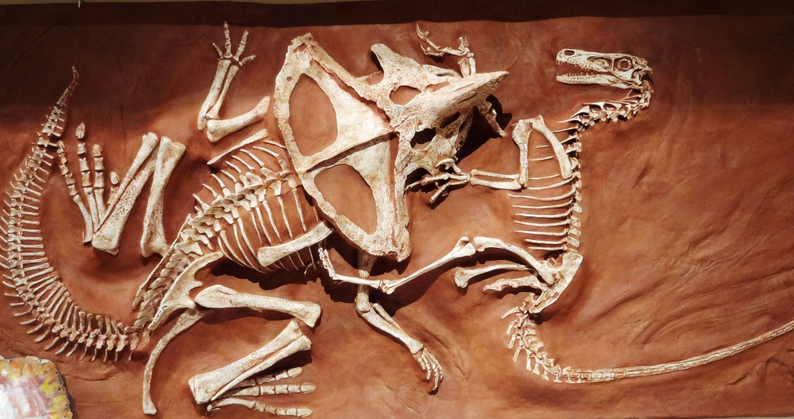
Discovered in Mongolia in 1971, these fossilized remains capture the Velociraptor and Protoceratops mid-battle. They were killed and fossilized in the midst of battle. The Protoceratops and herbivore has wrapped its biting jaw around the velociraptors arm. It’s believed, they were fossilized by a falling landmass which covered and killed them both while they were locked in a battle for their lives. They’ve remained in this pose for 74 million years they will remain forever locked in mortal combat.
The Velociraptor has sunk its deadly foot clawed deep into the neck of the Protoceratops. This vicious attack may have hit the carotid artery, a lethal blow but the Protoceratops fought back. It has thrown the Velociraptor to the ground before it and its jaws are locked onto the predators right arm. One possibility is that a sand dune collapsed on them while they were still fighting for their lives or perhaps the planet are bled to death from the blow to its carotid artery trapping the injured Velociraptor under its heavy body.